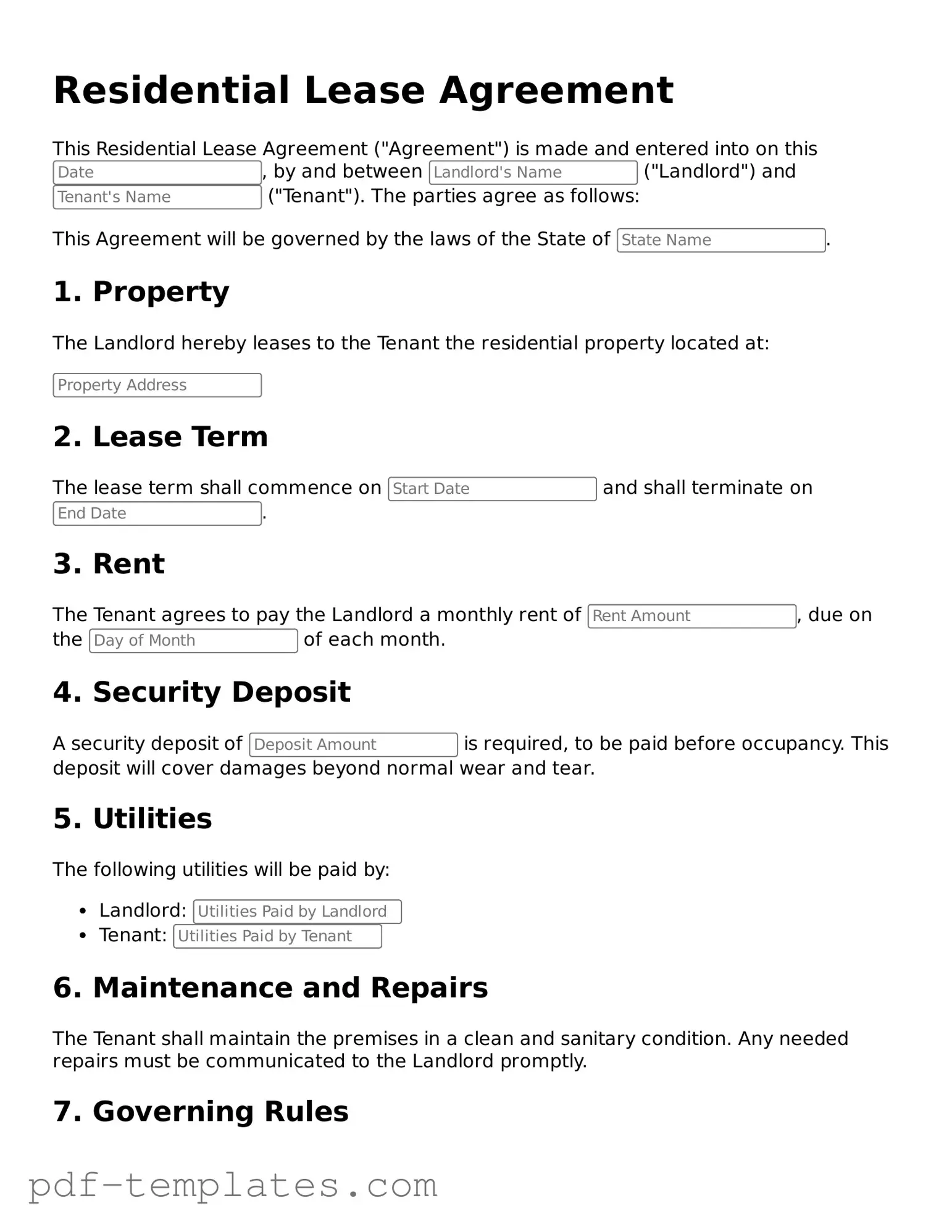A Rental Agreement is closely related to a Residential Lease Agreement, as both documents outline the terms and conditions under which a tenant may occupy a property. While a Residential Lease Agreement typically covers longer-term arrangements, a Rental Agreement is often used for shorter durations, such as month-to-month rentals. Both documents specify rental amounts, payment due dates, and responsibilities for maintenance and repairs, ensuring clarity for both landlords and tenants.
A Tenancy Agreement shares similarities with a Residential Lease Agreement in that it establishes the legal relationship between a landlord and a tenant. This document details the rights and obligations of each party, including the duration of the tenancy and conditions for termination. Like the Residential Lease Agreement, it may also include clauses on security deposits, property use, and rules regarding pets or guests.
A Lease Purchase Agreement combines elements of a lease and a purchase agreement, allowing tenants the option to buy the property at a later date. Similar to a Residential Lease Agreement, it includes terms regarding rent payments and property maintenance. However, it also outlines the conditions under which the tenant can exercise their option to purchase, making it a unique hybrid that serves both leasing and buying interests.
A Commercial Lease Agreement, while tailored for business properties, shares the same foundational structure as a Residential Lease Agreement. Both documents define the terms of occupancy, including rent, duration, and maintenance responsibilities. However, a Commercial Lease Agreement often includes additional provisions related to business operations, zoning laws, and liability insurance, reflecting the unique needs of commercial tenants.
A Sublease Agreement allows a tenant to rent out their leased property to another party, similar to how a Residential Lease Agreement governs the primary lease. This document must align with the original lease terms and typically requires the landlord's approval. Both agreements detail the responsibilities of the tenant and subtenant, including payment obligations and property upkeep.
A Roommate Agreement is another document that resembles a Residential Lease Agreement, particularly when multiple tenants share a rental unit. This agreement outlines each roommate's rights and responsibilities, including rent division, utility payments, and common area maintenance. While it may not be a formal lease, it serves to prevent disputes and clarify expectations among roommates.
A Lease Addendum is an additional document that modifies or adds to the terms of an existing Residential Lease Agreement. It may include new clauses regarding pet policies, maintenance responsibilities, or changes in rent. Both documents must be signed by all parties to be enforceable, ensuring that any modifications are legally binding and understood by everyone involved.
A Rental Application is a preliminary document that prospective tenants fill out before signing a Residential Lease Agreement. This application collects information about the applicant's rental history, income, and background. While it does not govern the terms of occupancy, it plays a critical role in the leasing process by helping landlords assess the suitability of potential tenants.
